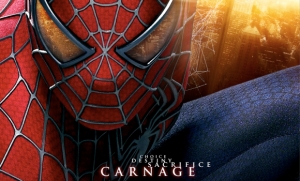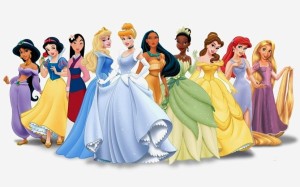Adulthood is the ever-shrinking period between childhood and old age. It is
the apparent aim of modern industrial societies to reduce this period to a
minimum. – Thomas Szasz, author, professor of psychiatry (1920-2012)
There is a trend of epic proportions out there – more like a tsunami, really – in which every square inch of children’s culture (books, shows, characters, merchandise) is being invaded by adult consumers… resulting in the products being warped and twisted to serve this new demographic.
How did this come about? Is it because grownups just won’t grow up? Is it a sign of total freedom that adults are able to remain child-like their entire lives, or a sign of arrested development?
A mature person is one who does not think only in absolutes, who is able to
be objective even when deeply stirred emotionally, who has learned that
there is both good and bad in all people and in all things, and who walks
humbly and deals charitably with the circumstances of life, knowing that in
this world no one is all knowing and therefore all of us need both love and
charity. -Eleanor Roosevelt, diplomat and writer (1884-1962)
At the same time “age creep” is noted in the young (ie. kids always want to consume media that is aimed at kids older than themselves), there is a definite “age creep” going in the opposite direction. This in itself wouldn’t be a problem – there’s nothing wrong with adults reading kids books for entertainment – except for the fact that the content creators respond by altering their content to pursue this mature audience, thus rendering the material less fit for the young, the intended audience in the first place.
I’ve often heard the advice that the best children’s stories should also entertain their parents. Now if by that you mean that the story should be crafted well enough to stand up to the scrutiny of a grownup, fine. However too often it’s used as a rather lame excuse to cram every children’s movie full of cultural in-jokes, sly sexual innuendo and ramped up thrills and violence, just to keep the parents fully entertained. Who are you trying to entertain here, and at whose expense?
It’s natural that people retain a fondness for the characters and stories of their youth. But just because there are a lot of grown men out there who have always been Spiderman fans, that doesn’t mean that Spiderman movies should now be made only for adult audiences – too violent, dark and frightening by far for the 6- or 7-year-olds of today.


The 6 and 7 year olds of yesteryear had mild Spiderman comic books and that abysmal Saturday morning cartoon (when a 7-year-old notices that backgrounds are endlessly recycled you know you are cutting too many corners). Today’s 6- and 7-year-olds have had all their superheroes snatched out of their grasp – unless they can grit their teeth and sit through the hair-raising, gruesome, cynical and sexed up superhero movies of today.
Even the mildest preschool fare is being co-opted by adults with, apparently, way too much time on their hands. Witness the phenomena of “bronies”, or grownups (mostly male) who are rabid fans of the My Little Pony franchise. Sounds like a satirical story from the Onion, but it is absolutely true.

I just ran into another enclave of adult fans of kid-culture when I was searching for images of the Disney princesses. I was interested in body image, and how the designs of the princesses have changed over the years (bust-waist-hip proportions shifting from modest Snow White to buxom Ariel). In the process I came across the Wikia site for Disney Princesses and scrolled in disbelief through the text and subsequent discussion. Included are discussions on the rules for becoming an official Disney Princess – should Mulan and Pocahontas really be included? Isn’t Belle technically more of a queen than a princess? What are the ages of each princess? Does Mulan’s new dress totally not suit her? What do you think of the Princesses’ new sparkly dresses? Which facial characteristics does each princess inherit from their mothers vs. fathers? When will Merida be included in the official lineup? And more importantly, what will she be wearing??!!

What kind of world do we live in when news that Anna and Elsa (from an as-yet-unreleased movie) will soon ‘become’ Disney Princesses elicits the following comment from someone older than, say, 8 years old:
OMG !!!!!! SO AWESOME THANKS!!! NOW IM EXCITED TO DEATH!!!
There is a lot of talk these days about how huge the market for children’s products is. This is usually seen as proof that kids today are catered to like little emperors, and have enormous spending power. It’s true that kids acquire more ‘stuff’ than they did in past generations – don’t we all? – but I think the sales figures are skewed by the amount of ostensibly child-oriented merchandise actually being aimed at teens and young adults.
Hello Kitty anyone? What looks like a franchise for 3-year-old girls is actually churning out products like cell phone covers, makeup cases, computer/iPhone/iPad accessories, car accessories, etc for kitsch-savvy teens and adults. So postmodern!
And while grown women are squealing over their new Hello Kitty toaster or bronies are debating the colours of their My Little Pony action figures, the superhero franchises are becoming ever more disturbing and violent.


Why the constant push to be “edgier”? Why is the roll-out of a “darker” Batman a development to be cheered? Because that’s what grownups want to see. And grownups don’t seem to have much interest in letting kids keep their childhood heroes to themselves.













The Great Screen-Time Tug-of-War
24 Jun 2013 1 Comment
by Kim in Commentary, Issues, Parenting, Technology, Television, Violence
Tug of war contested at the 1904 Summer Olympics. (Photo credit: Wikipedia)
The screentime tug-of-war is, I’m sure, a very very common sport in households today. Technology offers us ever more brilliant and enthralling ways to entertain and educate ourselves, and the desire for knowledge is a good thing, right? And yet, and yet, many parents harbour great anxiety about the slippery slope of screen time.*
Steve Almond has written a great piece on this for the New York Times: My Kids Are Obsessed With Technology, And It’s All My Fault. More